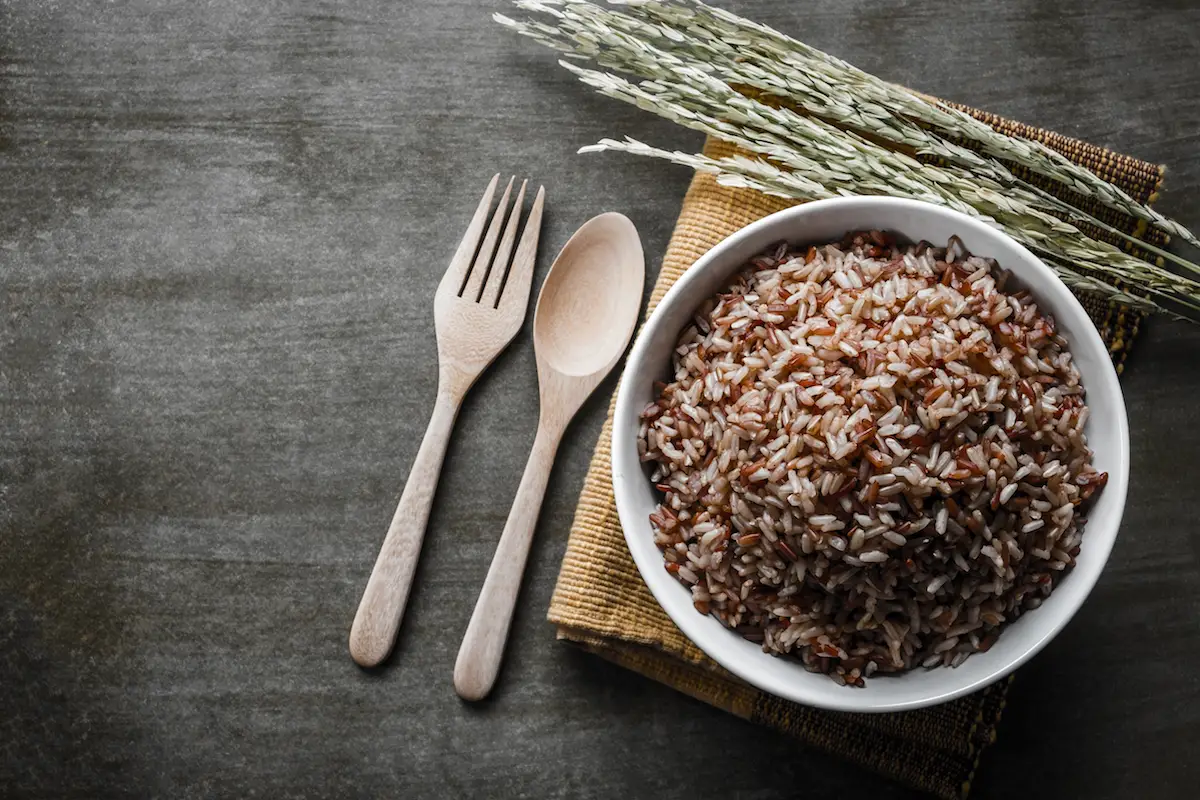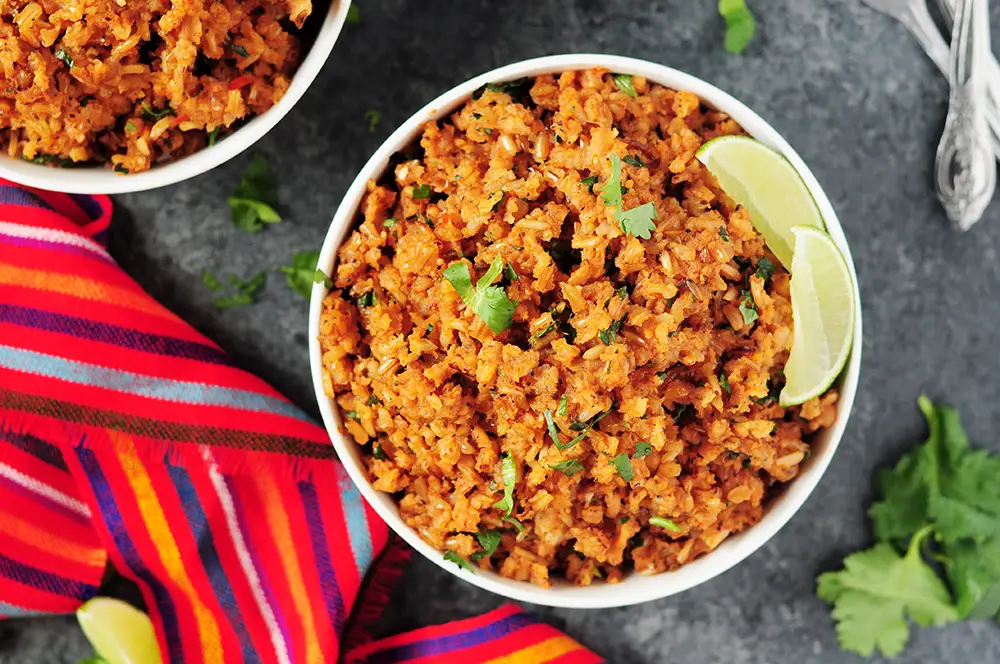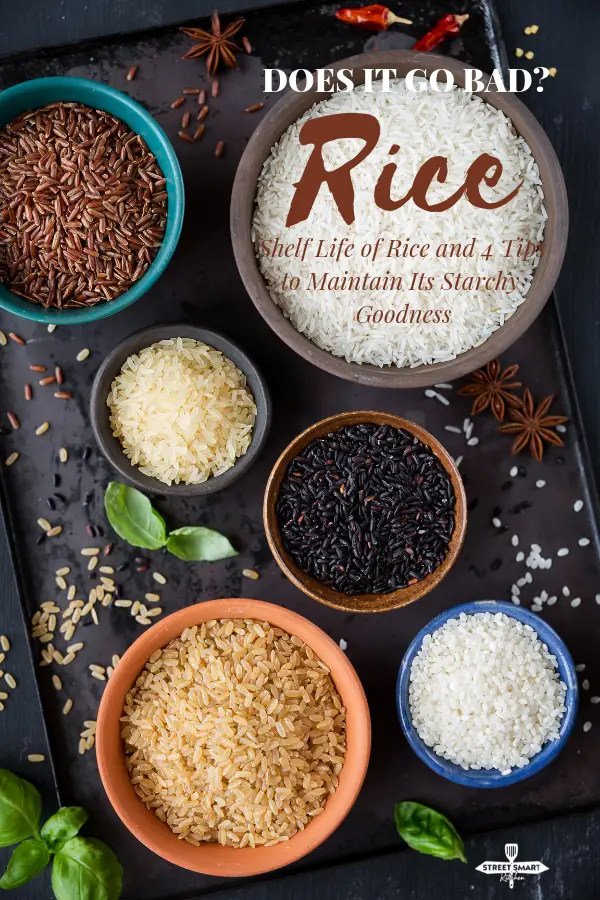Does Rice Go Bad? Shelf Life of Rice and 4 Tips to Maintain Its Starchy Goodness
Does rice go bad? It depends on the storage conditions, types, and whether it’s raw or cooked. Find out how long rice lasts, the signs of rancid rice, and how to prevent it from going to waste.

[thrive_leads id=’13056′]
Rice—the holy grail of carbohydrates and starchy goodness. Throughout time, the world has shown its love for rice as its second major staple food. And it’s not hard to see why. It can be the perfect sidekick for meals, providing both flavor and sustenance.
Rice is becoming more common nowadays. You just steam it in a rice cooker, toss it with some spices and meat in a pan, and you already have fried rice (chao fan) for a complete meal or a delicious side dish! You can also use it to cook risotto, paella, sushi, or sticky rice desserts.
Uncooked rice is meant to be stored for a longer period, but it’s still best to know how long that “long period” extends, the signs of spoiled raw and cooked rice, and how to prevent rice from turning bad with proper storage.

The Shelf Life of Rice
Uncooked Rice
Uncooked white rice, as well as wild, arborio, jasmine, and basmati rice have an indefinite shelf life when kept in the pantry, the fridge, and the freezer.
Uncooked brown rice doesn’t last as long as the other varieties, though. This healthier rice variety lasts for only 3-6 months in the pantry, 6-12 months in the fridge, and 12-18 months in the freezer.
Cooked Rice
No type of cooked rice lasts for more than 2 hours in hot, humid conditions, since bacteria grow rapidly at temperatures between 40°F and 140°F. Rice, cooked in water, is prone to foodborne illnesses when left out for longer than that.
When kept in the fridge, all types of cooked rice (except brown rice) can last for 4-6 days, and up to 6 months when stored in the freezer. Cooked brown rice, on the other hand, can last only for 3-5 days in the fridge and 2 months in the freezer.
Why Does White Rice Last Longer Than Brown Rice?
White rice has a low moisture content, which provides little chance for bacteria and mold to grow. All its nutrients have also been milled and stripped, so there are only a few organic materials left on white rice that can spoil.
Meanwhile, brown rice undergoes less processing, and fatty acids are still on the remaining layers of brown rice when they’re milled. Once these fats oxidize, your brown rice starts to spoil.
Note: Rice is still safe to consume after the indicated best-by or best-before date, as long as it has been properly stored in the right conditions.
If you discover that your rice has gone rancid, and you need it for a dish you’ve begun cooking, consider these substitutes. You can use quinoa, cauliflower, or bulgur wheat. While they may not have the same taste and texture, they’re the closest and healthier substitutes for rice.

[thrive_leads id=’13056′]
Signs of Spoiled Rice
The biggest threats to the shelf life of uncooked rice are moisture and pests or bugs. Rice is fully loaded with starch, and bacteria and mold love to breed on starches.
If you see a tiny reddish-brown bug called rice weevil roaming around your rice container, discard the rice and disinfect the container. You should not cook moist rice to avoid food poisoning.
Cooked rice has very little shelf life. These are signs that your cooked rice has gone bad:
- Hardness, dryness
- A sour or rancid smell
- Moldy
- Oily and has rancid odor (for brown rice)
Storage Tips to Keep Your Rice Fresh
No one wants to find a canister full of spoiled rice, so let’s avoid that with these storage tips:
- To maximize the shelf life of cooked rice, transfer it to an airtight container and refrigerate it. You can cook up a large batch, refrigerate it, and then you can reheat some in the microwave with a sprinkling of water, uncovered, for 1 minute or more, until the rice is tender and the liquid is absorbed.
- Put the cooked rice back into the fridge immediately after you’ve taken what you need.
- Freezing cooked and uncooked rice is also good. When freezing rice, transfer it to freezer bags and remove all air before you seal them.
- For best quality, freeze your rice for no more than three months to avoid freezer burn, which can cause dehydration and affect the quality, taste, and appearance of the rice.
- Wash rice first before cooking to remove some of the starch and prevent your cooked rice from clumping or getting sticky.
- Don’t use too much water when cooking rice; the soggier the rice, the faster it will spoil.
- Place raw rice in an airtight container in a pantry or other dry area at room temperature to keep pests or moisture from reaching it.

Looking for some delicious rice recipes? Here are a few options that you might like.
- Mexican Rice
- Kimchi Fried Rice
- Salmon Fried Rice With Green Onions
- Grilled Shrimp Brown Rice Combo
- Bacon and Eggs Fried Rice
- Ginger Fried Rice
Go loco for risotto with these recipes:
Love all sorts of rice dishes? Check out StreetSmart Kitchen’s Tatung Rice Cooker cookbook for more tips and recipes.

[thrive_leads id=’13056′]
About the Author
Sharon Chen is an Integrative Nutrition Health Coach and author of the Complete Sous Vide Cookbook. She believes food not only brings healing but also connection. As the creator of StreetSmart Kitchen, she aims to make meal prep easier than ever and help you find balance, ease, joy, and simplicity in the kitchen as you improve your well-being.




Hi, I like your post really I have read first-time Thanks for sharing keep up the good work.